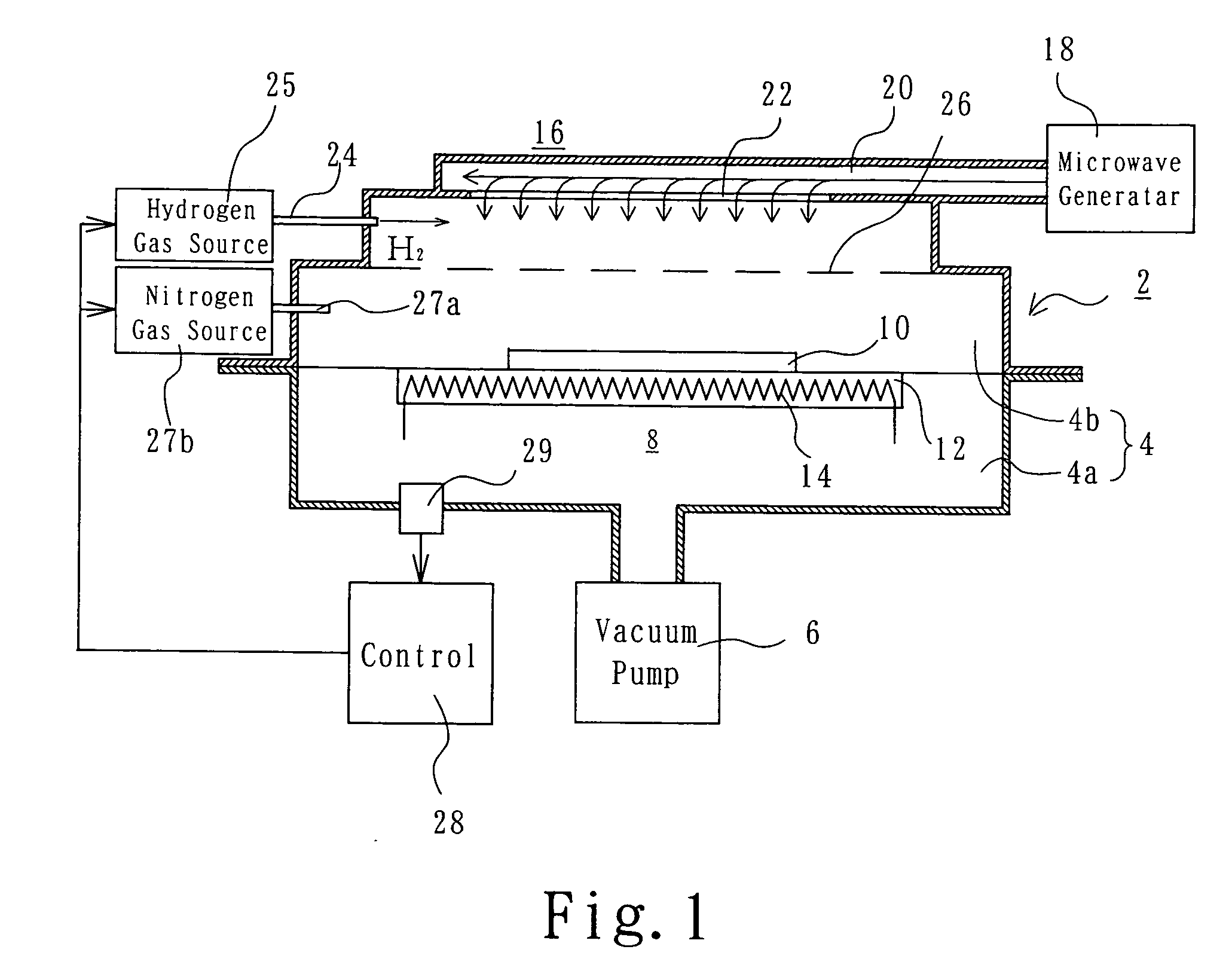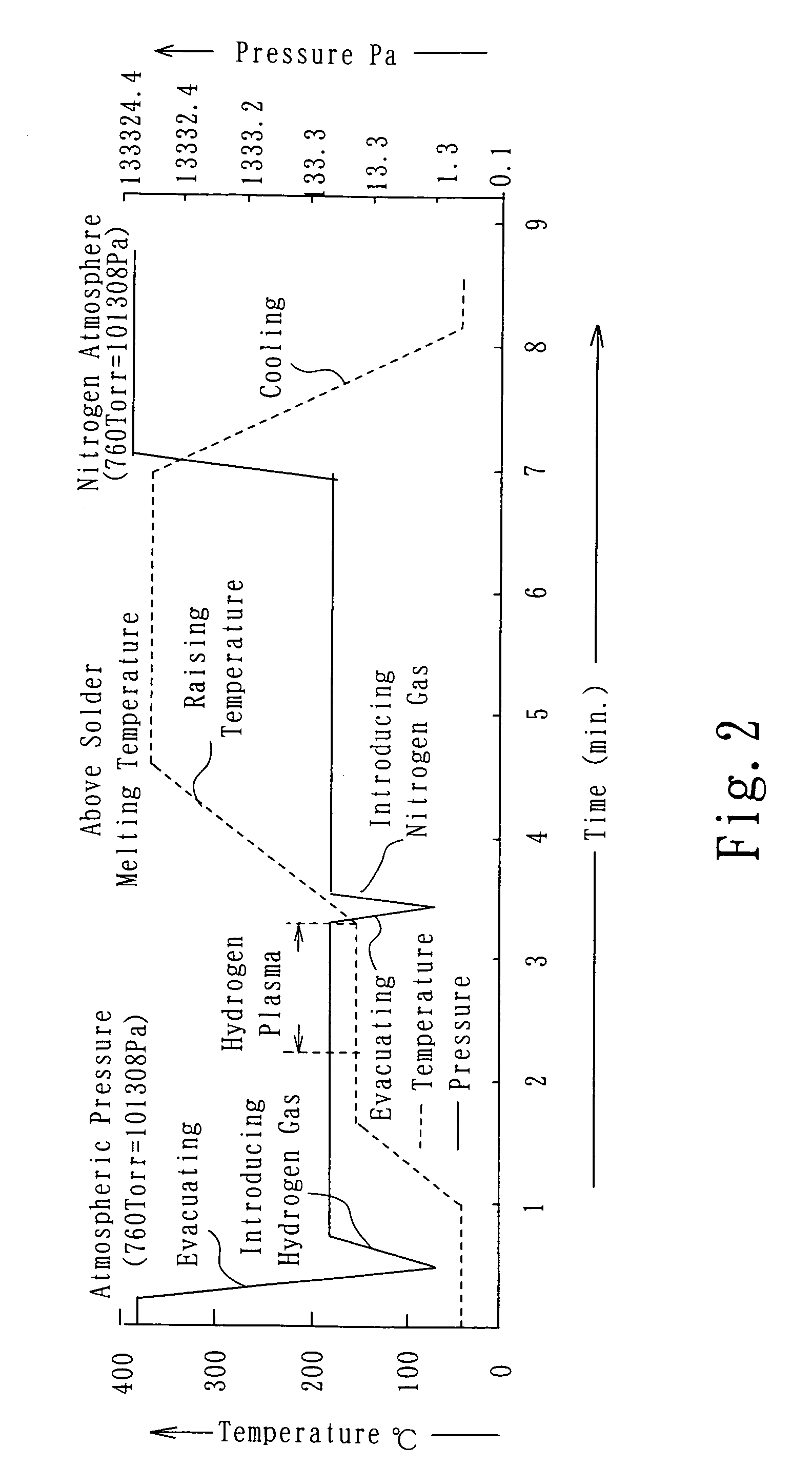Soldering method
- Summary
- Abstract
- Description
- Claims
- Application Information
AI Technical Summary
Benefits of technology
Problems solved by technology
Method used
Image
Examples
Embodiment Construction
[0013] As shown in FIG. 1, a soldering apparatus used in the soldering method according to an embodiment of the present invention includes a vacuum room 2. The vacuum room 2 has a chamber 4, for example, which includes a lower chamber part 4a and an upper chamber part 4b. The lower chamber part 4a is box-shaped and has an opening on top. The upper chamber part 4b is joined to the lower chamber part 4a by means of, for example, a hinge so as to be able to close the upper opening in the lower chamber part 4a. The lower and upper chamber parts 4a and 4b are arranged such that, when the upper chamber part 4b is over the lower chamber part 4a, the interiors of both chamber parts become hermetical. Exhausting means, e.g. a vacuum pump 6, is coupled to the bottom of the lower chamber part 4a. Operation of the vacuum pump 6 with the upper chamber part 4b covering the lower chamber part 4a evacuates the interior of the vacuum room 2. The vacuum pump 6 is of a type having a controllable exhau...
PUM
| Property | Measurement | Unit |
|---|---|---|
| Temperature | aaaaa | aaaaa |
| Pressure | aaaaa | aaaaa |
| Melting point | aaaaa | aaaaa |
Abstract
Description
Claims
Application Information
 Login to View More
Login to View More - R&D
- Intellectual Property
- Life Sciences
- Materials
- Tech Scout
- Unparalleled Data Quality
- Higher Quality Content
- 60% Fewer Hallucinations
Browse by: Latest US Patents, China's latest patents, Technical Efficacy Thesaurus, Application Domain, Technology Topic, Popular Technical Reports.
© 2025 PatSnap. All rights reserved.Legal|Privacy policy|Modern Slavery Act Transparency Statement|Sitemap|About US| Contact US: help@patsnap.com



